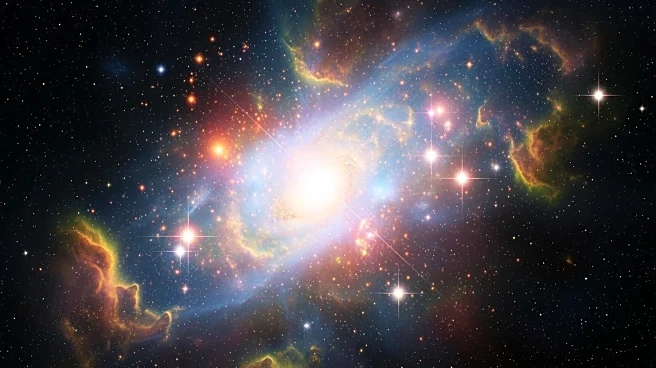What's Happening?
A study led by ICREA researcher Mark Gieles has developed a model explaining how extremely massive stars (EMS), with masses over 1,000 times that of the Sun, influenced the formation of the universe's
oldest star clusters. These stars played a crucial role in the chemical composition of globular clusters, which are ancient stellar systems. The research suggests that EMS formed in turbulent gas flows within massive star clusters, leaving distinct chemical signatures in the stars formed from this environment.
Why It's Important?
The study provides a new understanding of the role of EMS in the early universe, linking their formation to the chemical enrichment of globular clusters. This insight helps explain the unusual chemical compositions observed in these clusters and suggests that EMS were integral to the development of the first galaxies. The findings also imply that EMS may have contributed to the formation of intermediate-mass black holes, offering a cohesive explanation for star formation, chemical enrichment, and black hole creation.
Beyond the Headlines
The implications of this study extend beyond the Milky Way, as nitrogen-rich galaxies observed by the James Webb Space Telescope may contain globular clusters dominated by EMS. These stars could have played a key role in the formation of the first galaxies, enriching them chemically and potentially leading to the creation of early black holes. The study enhances our understanding of the early universe and the processes that shaped its development.













